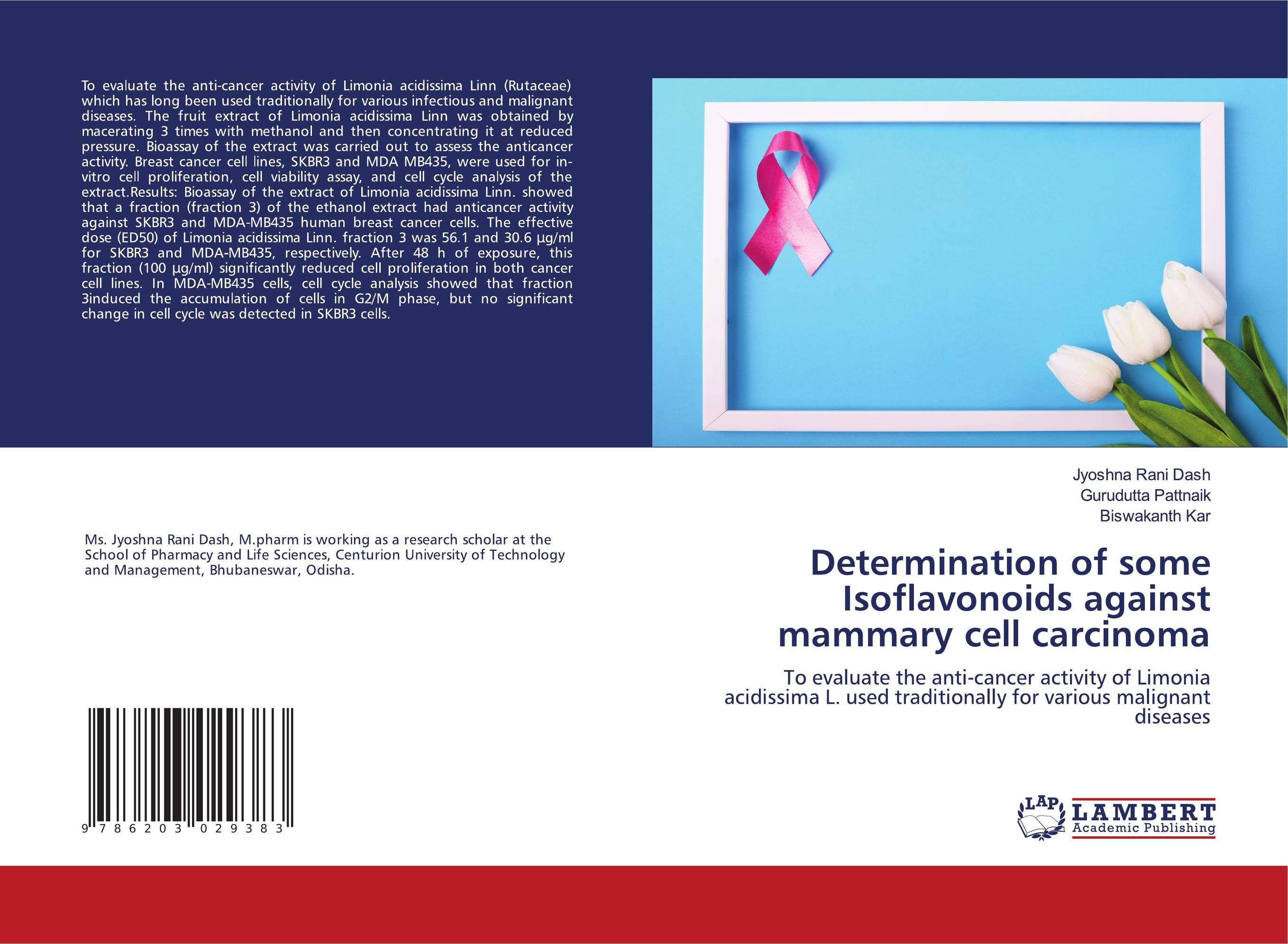| Поиск по каталогу |
|
(строгое соответствие)
|
- Профессиональная
- Научно-популярная
- Художественная
- Публицистика
- Детская
- Искусство
- Хобби, семья, дом
- Спорт
- Путеводители
- Блокноты, тетради, открытки
Determination of some Isoflavonoids against mammary cell carcinoma. To evaluate the anti-cancer activity of Limonia acidissima L. used traditionally for various malignant diseases

В наличии
| Местонахождение: Алматы | Состояние экземпляра: новый |

Бумажная
версия
версия
Автор: Jyoshna Rani Dash,Gurudutta Pattnaik and Biswakanth Kar
ISBN: 9786203029383
Год издания: 2020
Формат книги: 60×90/16 (145×215 мм)
Количество страниц: 64
Издательство: LAP LAMBERT Academic Publishing
Цена: 23350 тг
Положить в корзину
| Способы доставки в город Алматы * комплектация (срок до отгрузки) не более 2 рабочих дней |
| Самовывоз из города Алматы (пункты самовывоза партнёра CDEK) |
| Курьерская доставка CDEK из города Москва |
| Доставка Почтой России из города Москва |
Аннотация: To evaluate the anti-cancer activity of Limonia acidissima Linn (Rutaceae) which has long been used traditionally for various infectious and malignant diseases. The fruit extract of Limonia acidissima Linn was obtained by macerating 3 times with methanol and then concentrating it at reduced pressure. Bioassay of the extract was carried out to assess the anticancer activity. Breast cancer cell lines, SKBR3 and MDA MB435, were used for in-vitro cell proliferation, cell viability assay, and cell cycle analysis of the extract.Results: Bioassay of the extract of Limonia acidissima Linn. showed that a fraction (fraction 3) of the ethanol extract had anticancer activity against SKBR3 and MDA-MB435 human breast cancer cells. The effective dose (ED50) of Limonia acidissima Linn. fraction 3 was 56.1 and 30.6 ?g/ml for SKBR3 and MDA-MB435, respectively. After 48 h of exposure, this fraction (100 ?g/ml) significantly reduced cell proliferation in both cancer cell lines. In MDA-MB435 cells, cell cycle analysis showed that fraction 3induced the accumulation of cells in G2/M phase, but no significant change in cell cycle was detected in SKBR3 cells.
Ключевые слова: Mammary cell carcinoma, isoflavonoids, Cell lines, Flavonoids



